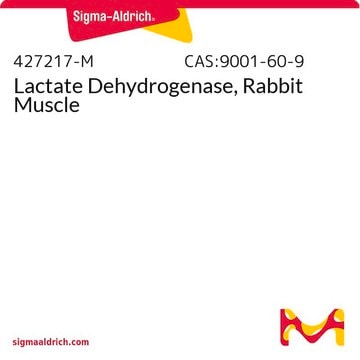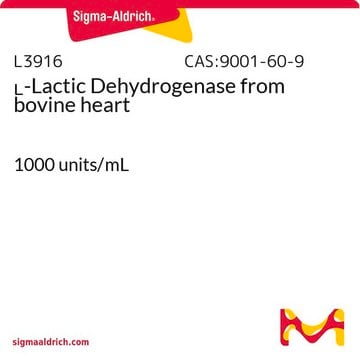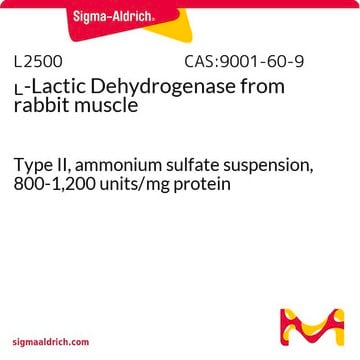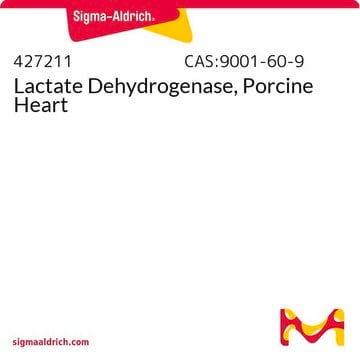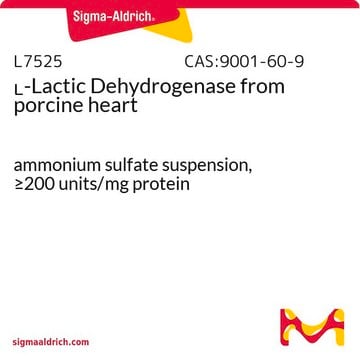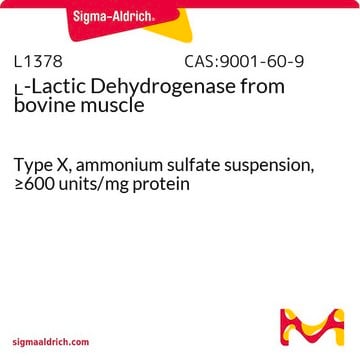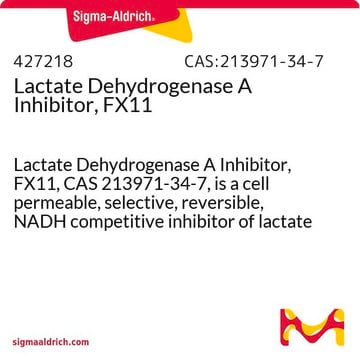SAE0049
Lactic Dehydrogenase, recombinant
from human, recombinant, expressed in E. coli, aqueous solution
Sinónimos:
(S)-Lactate: NAD+ oxidoreductase, L-Lactate Dehydrogenase
About This Item
Productos recomendados
origen biológico
human
Nivel de calidad
recombinante
expressed in E. coli
Formulario
aqueous solution
condiciones de almacenamiento
(Keep container tightly closed in a dry and well-ventilated place)
color
colorless
Nº de acceso UniProt
Condiciones de envío
dry ice
temp. de almacenamiento
−20°C
Información sobre el gen
human ... LDHA(3939)
¿Está buscando productos similares? Visita Guía de comparación de productos
Descripción general
The gene LDHA (L-lactate dehydrogenase A chain) is mapped to human chromosome 11p15. It is a subunit of lactate dehydrogenase.In particular, lactic dehydrogenase A (LDHA) is mainly found in skeletal muscle, and for that reason is known as the M subunit. This recombinant form of LDHA has a C-terminal histidine-tag.
Aplicación
Acciones bioquímicas o fisiológicas
Definición de unidad
Forma física
Producto relacionado
Código de clase de almacenamiento
10 - Combustible liquids
Clase de riesgo para el agua (WGK)
WGK 1
Punto de inflamabilidad (°F)
Not applicable
Punto de inflamabilidad (°C)
Not applicable
Elija entre una de las versiones más recientes:
Certificados de análisis (COA)
¿No ve la versión correcta?
Si necesita una versión concreta, puede buscar un certificado específico por el número de lote.
¿Ya tiene este producto?
Encuentre la documentación para los productos que ha comprado recientemente en la Biblioteca de documentos.
Los clientes también vieron
Nuestro equipo de científicos tiene experiencia en todas las áreas de investigación: Ciencias de la vida, Ciencia de los materiales, Síntesis química, Cromatografía, Analítica y muchas otras.
Póngase en contacto con el Servicio técnico


